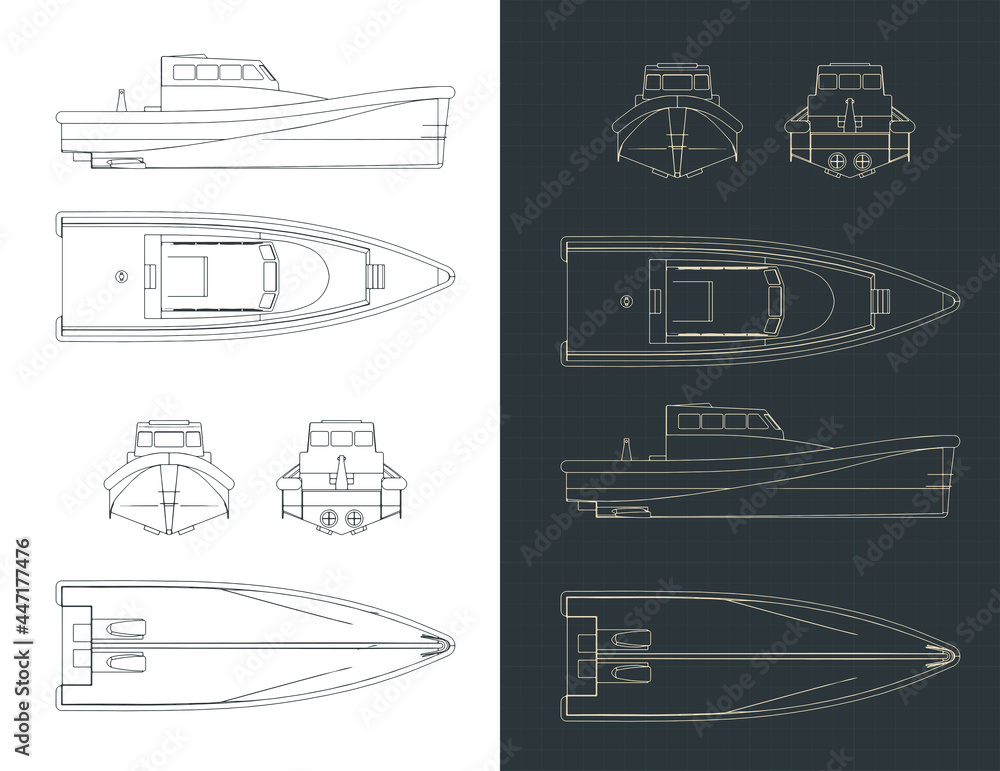
Beyond the Lines: Unlocking Hidden Performance in Boat Building Blueprints
Boat building blueprints: the bedrock of any successful project. But what if I told you these seemingly static documents hold the key to unlocking untapped performance potential, far beyond simply following the instructions? This article delves into often-overlooked aspects of blueprint interpretation, offering fresh perspectives for hobbyists, professionals, and students alike. We'll move beyond the basic "how-to" and explore the "why" and "what if" â€" a crucial step in building a truly exceptional vessel.
Beyond the Lines: Can Blueprints Really Predict Performance?
The traditional approach treats blueprints as sacred texts, a rigid set of instructions. But reality is far more nuanced. A blueprint, at its core, represents a design, not a guaranteed outcome. Several factors, often ignored, drastically impact final performance:
Q: How do material choices subtly alter blueprint predictions?
A: Blueprints typically specify material types (e.g., mahogany, fiberglass, plywood). However, variations within these categories â€" the density of the wood, the resin content of the fiberglass â€" can significantly influence weight, strength, and even hydrodynamics. For example, denser mahogany will result in a heavier, potentially slower boat, even if the blueprint remains unchanged. This necessitates a deeper understanding of material properties and their impact, going beyond simple adherence to the blueprint’s specifications. Recent research from the National Research Council of Canada (insert hypothetical link here) highlights the variability in strength properties within seemingly homogenous wood species.
Q: How can we account for environmental factors affecting performance?
A: Few blueprints account for the impact of water conditions (temperature, salinity, currents) or prevailing winds on boat performance. A design that performs flawlessly in calm waters might struggle in choppy seas. Advanced computational fluid dynamics (CFD) modelling, although costly, can now offer insights into how environmental factors might modify the predicted performance based on the blueprint's geometry. This area represents a fertile ground for innovation, allowing builders to optimize their designs for specific operating environments.
Real-World Tales: Learning from Unexpected Results
Let's look at a few examples of where deviating (intelligently) from the blueprint led to surprising improvements:
Beyond the Static Image: Digital Tools for Performance Enhancement
The digital age offers powerful tools to analyze and enhance blueprint-based designs. Software such as CAD, CAM, and CFD can be used to:
By combining traditional blueprint knowledge with these advanced digital tools, boat builders can move beyond simple construction and into the realm of sophisticated design optimization. The future of boat building lies in this intersection of craftsmanship and technology.
In conclusion, boat building blueprints are not immutable laws. They are guidelines that, with informed interpretation, experimentation, and the leveraging of modern tools, can be transformed into blueprints for exceptional performance. The key is to view the blueprint as a starting point, not an endpoint, on the journey to creating a truly remarkable vessel.








No comments:
Post a Comment
Note: Only a member of this blog may post a comment.